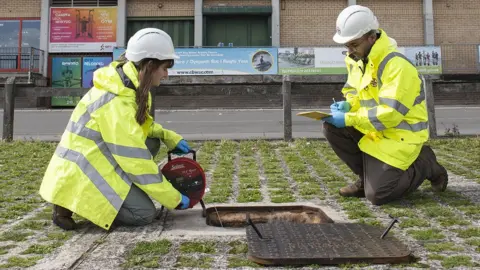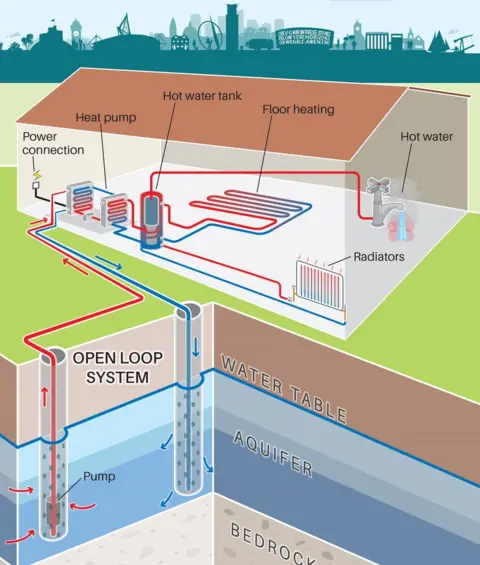Climate change: Cardiff study says ground-water could heat homes
 British Geological Survey
British Geological Survey Natural water in the ground could be used as a low-carbon heat source in many towns and cities, according to research from the British Geological Survey (BGS).
A three-year-study examined the environmental impact of a ground-water heating scheme.
Data was gathered from a natural ground-water system below Cardiff.
The BGS are now calling for more research to see if similar technology could be used on a larger scale.
The £300,000 study examined the environmental impact of a ground-water heating scheme which heated a school building in the Welsh capital, using the warmth stored in the natural water system below ground and electric heat pumps.
A network of 61 bore-holes equipped with temperature and water-level sensors were used to build up a picture of the ground-water temperatures.
BGS research leader David Boon said: "We know the use of ground source heat pumps changes the ground temperature by several degrees Celsius.
"What we didn't know was by how much."
BGS said their findings confirmed that a small quantity of heat from a very large volume of water could provide low-carbon heating for many UK towns and cities.
It could be used in homes, commercial buildings and larger "heat networks", they said.
"Our findings prove that ground-water source heat pumps are a technically viable low-carbon heating solution in many towns and cities across the UK, providing the geology beneath the surface is favourable," Mr Boon said.
"Of course, regulation and long-term planning will be needed to manage this emerging energy technology so that larger and more complex schemes can be rolled out in our cities without 'draining' this underground heat source."

How the energy beneath our feet could heat and power our homes
 British Geological Survey
British Geological Survey 
- Hot water and steam from deep underground can be used to drive turbines
- It can be also used to heat buildings directly
- It is seen as a potential form renewable energy with no carbon footprint
Source: BBC Bitesize/British Geological Survey

